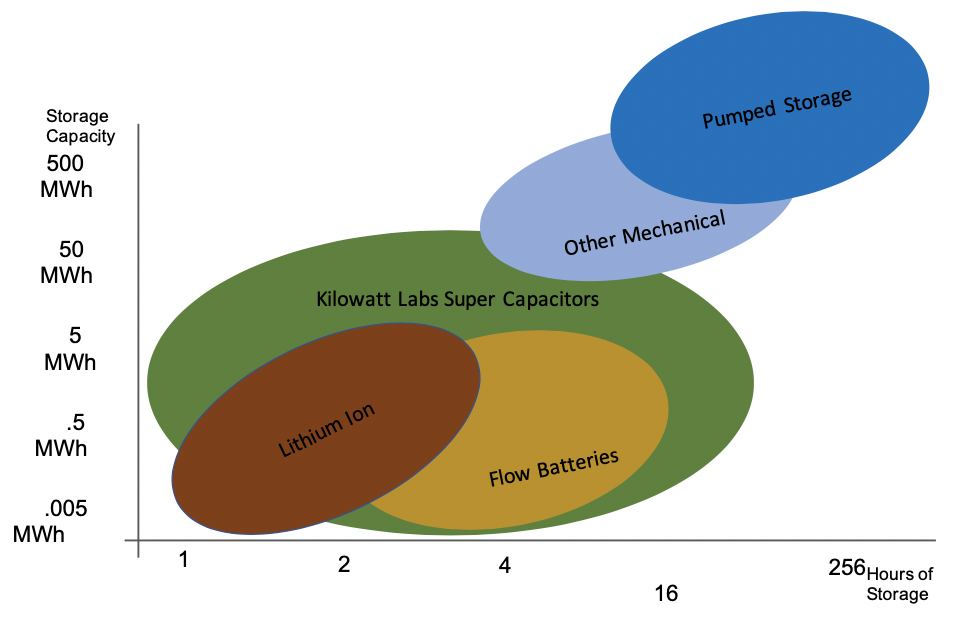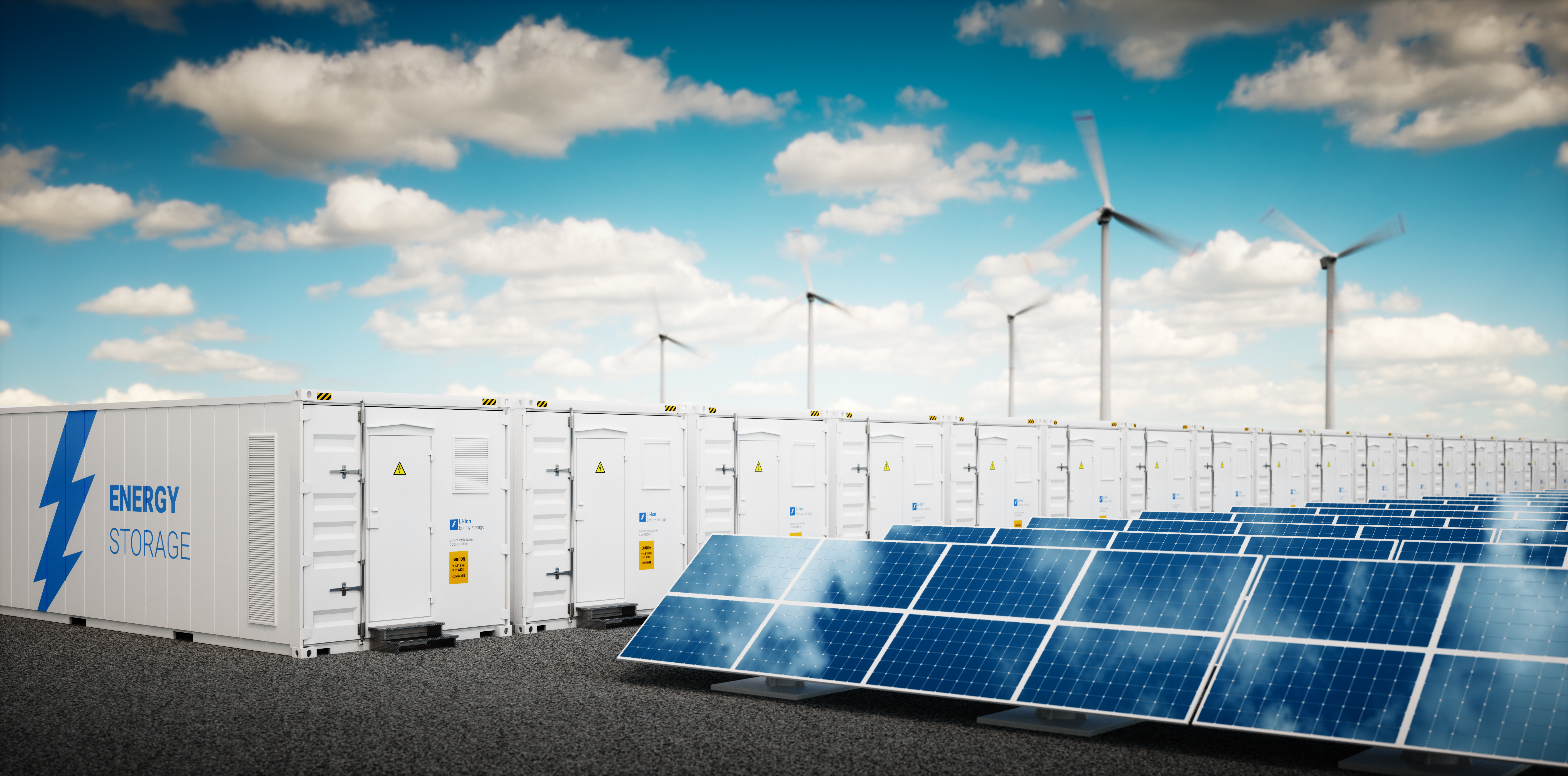There are a multitude of Energy Storage Technologies (ESS) that include:
Lead Acid
Lithium-Ion: include a range of electrolyte chemistries each with their own combination of cost, lifecycle, and charge/discharge rates. There are five Maine lithium-ion types
Lithium-Nickle Maganese [NMC]
Lithium-Iron Phosphate [LFP]
Lithium Titanate [LTO]
Lithium-Cobalt [LCO]
Lithium Manganese [LMO]
Zinc hybrid technologies
Redox flow batteries (iron, vanadium, bromide, and sodium)
Mechanical energy storage such as pumped hydro, compressed air and flywheel
Electrostatic technologies such as supercapacitors
Each has advantages and disadvantages due to their individual combination of cost, lifecycle, and charge/discharge rates. Generally, each energy storage system is best suited for particular use cases. The chart below illustrates this point.

Typically, the economics of an ESS system is compared based upon the Levelized Cost of Storage (LCOS). This is analogous to the Levelized Cost of Energy (LCOE) that Energy production systems are compared to each other. LCOS can be described as the total lifetime discounted cost of electricity (stored and discharged) Energy STorage System divided bu its cumulative delivered electricity. While this metric is a relatively easy calculation and you can compare very different technologies easily it has flaws. We see three major flaws.
- The cost of purchasing energy and revenue obtained from outputted energy transferred through the storage is part of the calculation. This makes the calculation very dependent upon the exact use case and the financial aspects of the situation that can change with time.
- LCOS is typically quoted based upon a 10-year asset lifetime which for some technologies is either too long (Lead Acid) or too short (Kilowatt Labs or Flow Batteries). Because most electrical equipment has much longer lifetimes (solar installations are typically 25 years) this makes shorter lifetime Lithium-Ion energy storage look more valuable than they really are.
- Most people calculate LCOS not taking into account the energy storage efficiency, usable capacity, or degradation rates that can make a large difference in the economy for storage.
We propose a new metric called Independent Levelized Cost of Storage (iLCOS). When you look at the real asset lives of the entire system you reach very different conclusions. In most cases, Lithium-Ion technologies don’t make the grade because they typically need to be replaced in 8 to 12 years. Lead Acid, even though it is very inexpensive, needs to be replaced in three to four years if you need to cycle it often and has lowered usable capacity. While pumped storage has great cost advantages in LCOS but the projects need to be so large that typically they can only be used in very limited use cases.



